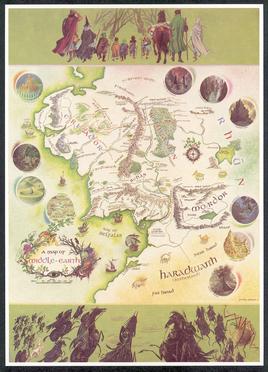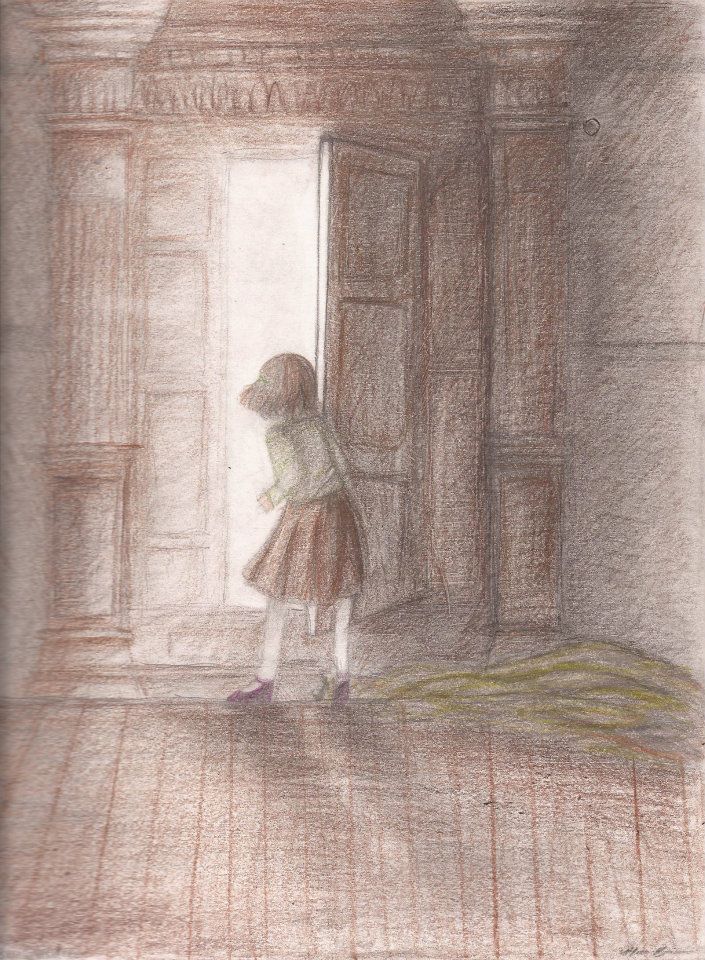“It is at any
rate essential to a genuine fairy story...that it should be presented
as true” - J.R.R Tolkien, On Fairy Stories

Largely an essay on the origin,
qualifications, and readership of fairy stories, J.R.R. Tolkien's
On
Fairy Stories argues for the
legitimacy of fairy stories being read and enjoyed by people of all
ages.
Yet
understanding what Tolkien means by “true” in
On Fairy
Stories and how the element of truth ultimately makes for a
good
fairy story, is crucial. Not
only is this a key issue in his own essay, but it connects with
C.S. Lewis' argument in
On Stories, an essay exploring the joy
of reading a story. If, as Lewis states, “belief at best is
irrelevant” (Lewis, 13), then in order to understand what makes a
good and believable story, it is best to understand what similar
distinctions are being made by each author between belief and truth.
For both Lewis and Tolkien a story's truth does not depend
on whether or not the events are credible, or as Tolkien states, if
“a thing exists or can happen in the real (primary) world” (131).
Such belief is unnecessary, not because marvelous or fantastic events
should not be believed or are simply not plausible, but rather
because a good story does not call for its readers to believe that
its events can happen in what Tolkien calls
our “primary”
world. Mistaking this as the story's purpose can lead to a common
misconception: that marvelous or fantastic stories are only enjoyed
by children, because after all, it is children that
believe
that such things are possible. When Lewis frankly states, “Good
stories often introduce the marvelous or supernatural, and nothing
about Story has been so often misunderstood as this” (13) he refers
to the mistake of thinking that it is children's inexperience or
ignorance of our world that leads them to more easily believe, and
thus enjoy the events of a fantastic story. Children are far from
being the majority of those who like being told of impossible things
or like reading of the magic of other-worlds. They are also, as
Tolkien points out, not even the only type of person with the
capability or desire believe in such things (132). For Tolkien and
Lewis there is another, greater quality that a good fairy story
demands if it is to be enjoyed: that of truth.

It is belief of a marvelous, but true
world that makes reading stories, especially one of fantasy or fairy
enjoyable. In order to write a believable fantastical story, it must
be drawn upon our own real world to produce the effect of
plausibility. The creation of a “Secondary World” (132) as
Tolkien calls it, is by its nature based upon the primary world, and
can never be wholly distinct from it. But as a creation, a secondary
world allows, if not invites, the extraordinary. In order to enjoy
entering this new and marvelous world, the reader must be able to
believe that it “accords with the laws of that world” (131). Thus
it is not the childish belief in the the
possibility of the secondary world that the reader takes joy
in, but the
plausibility that
makes entering the story- and staying there- possible. A
successfully “true” fairy story will make the act of belief
effortless. It is this
effortless belief in a story that Lewis likewise attributes not to
childish ignorance, but to the writer's craftsmanship and willingness
to “draw from the only real 'other world' we know, that of the
spirt” (12). Although more ambiguous than Tolkien's definition of
the primary world as simply our real world, Lewis' 'other world' is
not wholly distinct from Tolkien's primary world. It recalls the
human spirit, certainty a very real sentiment and primary element
from our own world that writers must draw upon in order to create
“plausible and moving” (12) stories. It is in this spirit and
vitality of humanity that writers both draw from and emulate, and in
such spirit the reader in turn enjoys the story.
In looking at
Lewis' and Tolkien's similar views on the believability of marvelous
stories we come out with perhaps the most important and interesting
understanding of why, after all, it is important for these secondary
worlds to be read. Both Lewis and Tolkien believe strongly and
vehemently in the transformative effect that stories have over
readers. Most particularly the effect of taking from and placing in
reality, the fantastical. For, in creating the most plausible and
fantastic world, the writer has based it upon real world objects,
events, and routines, but has placed these in a marvelous setting,
what Tolkien describes as “simplicities [that] are made all the
more luminous by their setting” (147). When the reader is truly
immersed in such a world, he absorbs these simplicities in splendor,
and thus once out of the world his opinion on ordinary events and
objects transforms from the mundane into the marvelous, something
Lewis describes as helping “strengthen our relish for life” (15).
This
is ultimately the imaginative and creative power of reading a story
that is both marvelous and true. Through similar arguments Lewis and
Tolkien not only to defend fairy stories, but legitimize fantasy
stories as illuminating and imaginative fiction.












